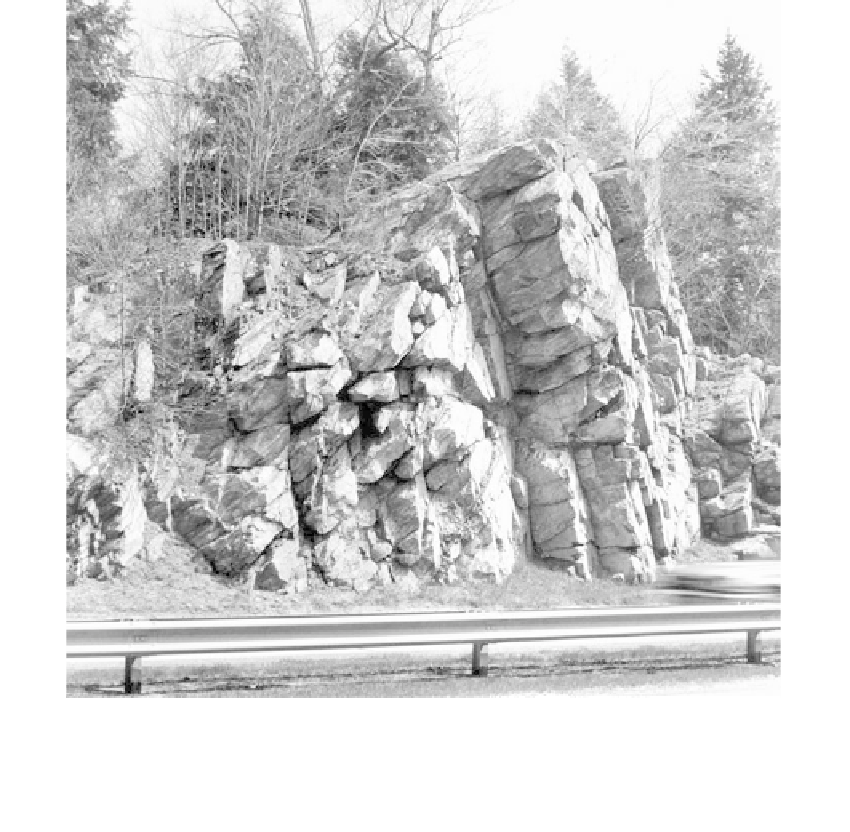Environmental Engineering Reference
In-Depth Information
FIGURE 6.45
Block jointing in granite gneiss (Connecticut Turnpike, Middlesex County, Connecticut) (moderately close,
Table 5.23).
6.4.4
Block Behavior
General
The weakness planes divide the mass into blocks, and it is the mechanical interaction of
the blocks and joints and other discontinuities that normally govern rock-mass behavior
under applied stress. However, the behavior of weak, decomposed rock under stress may
be governed by the properties of the intact blocks, rather than fractures.
Blocks of rock, intact or decomposed, have the parameters of dimension, unit weight,
Young's modulus, Poisson's ratio, cohesion, friction angle, and total strength at failure.
These properties normally will account for the smaller-scale defects of foliation, schistos-
ity, and cleavage.
The orientation of the discontinuities with respect to the direction of the applied stress
has a most significant effect on the strength parameters and deformation.
Deformation
As stresses are imposed, either by foundation load or the removal of confining material,
the fractures may begin to close, or close and undergo lateral displacement. Closure is
common in tunneling operations.


